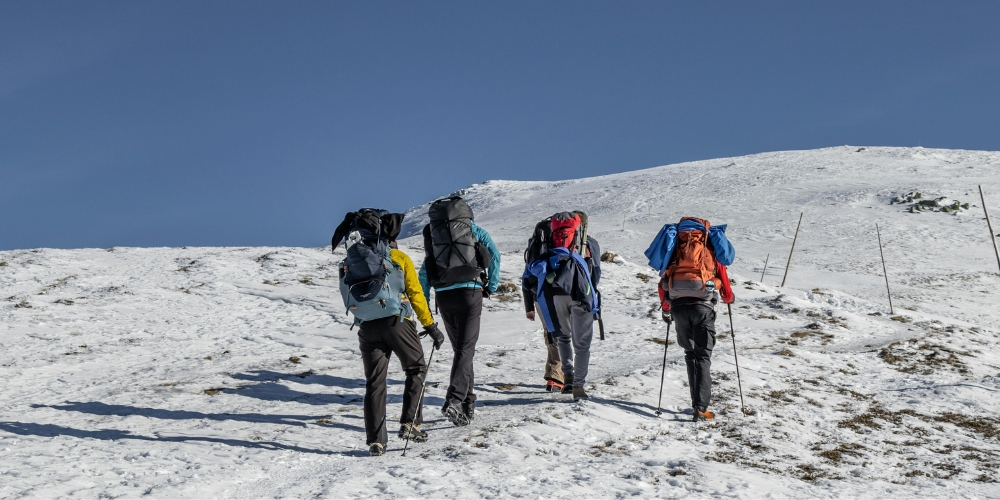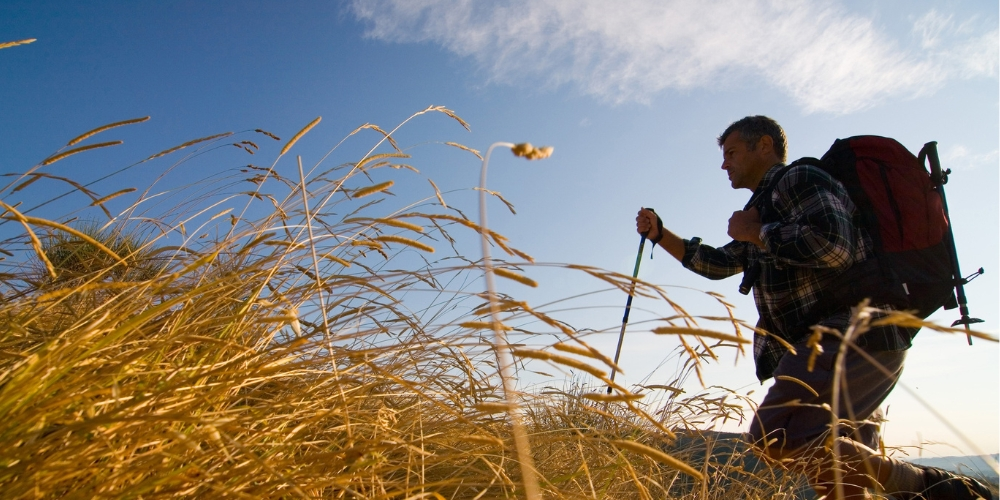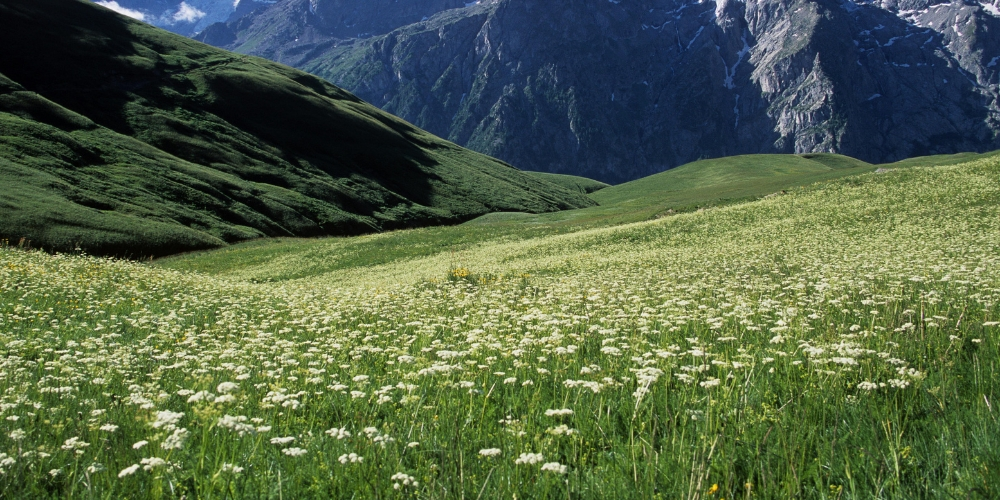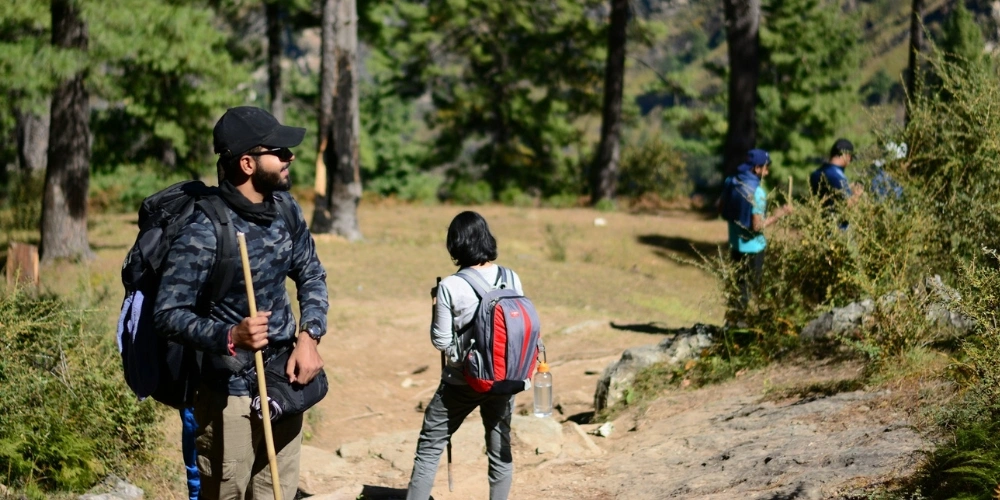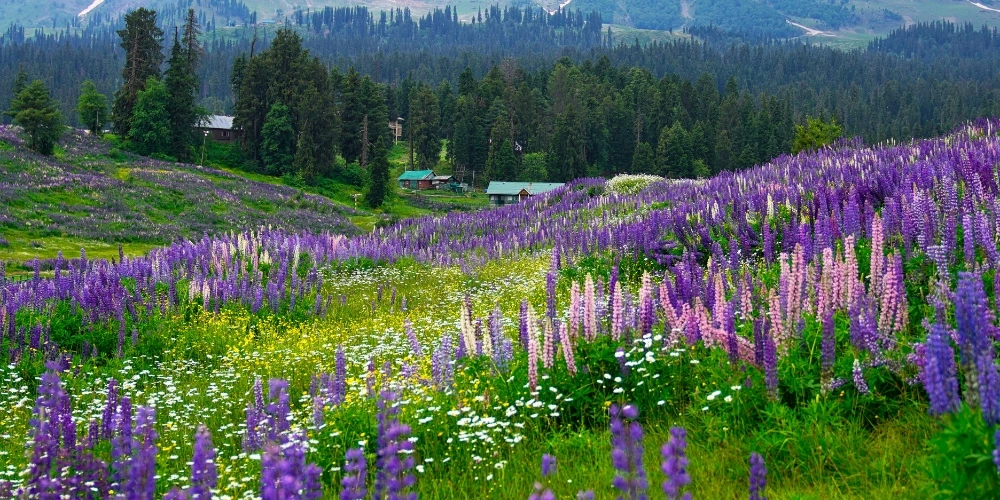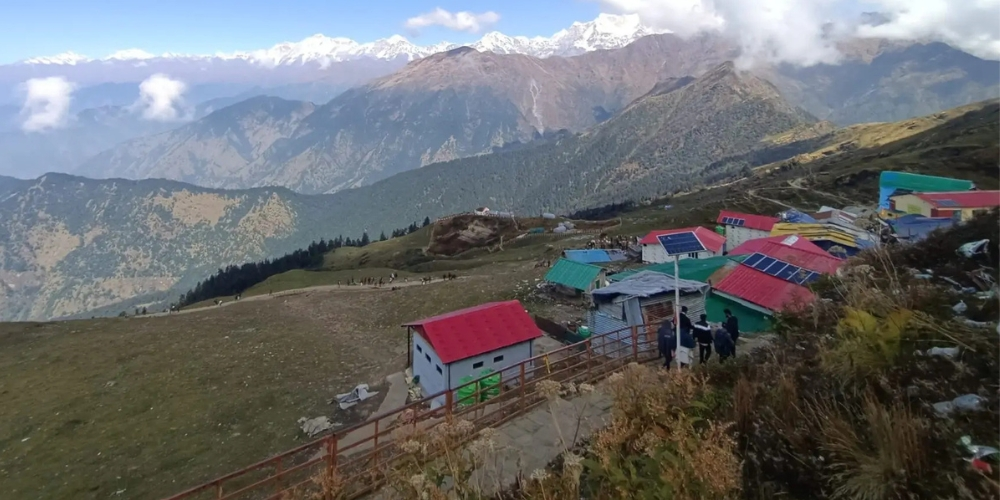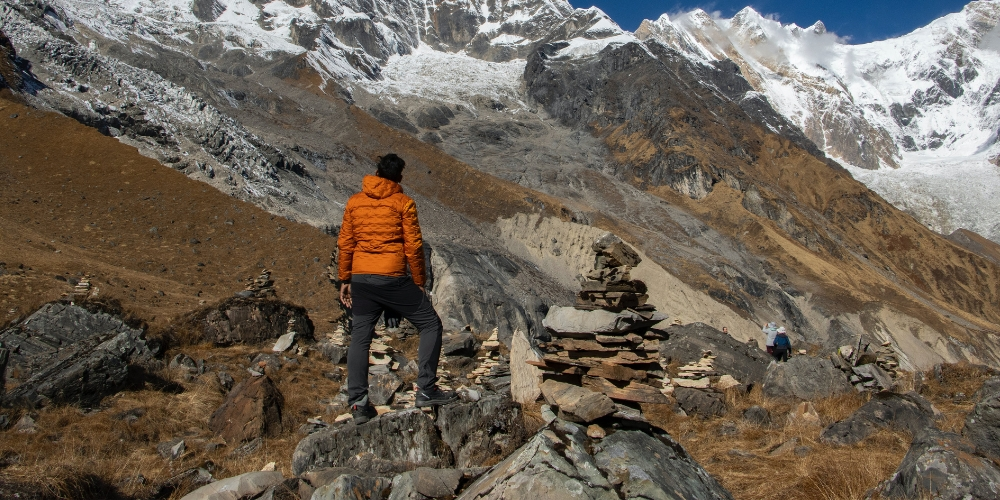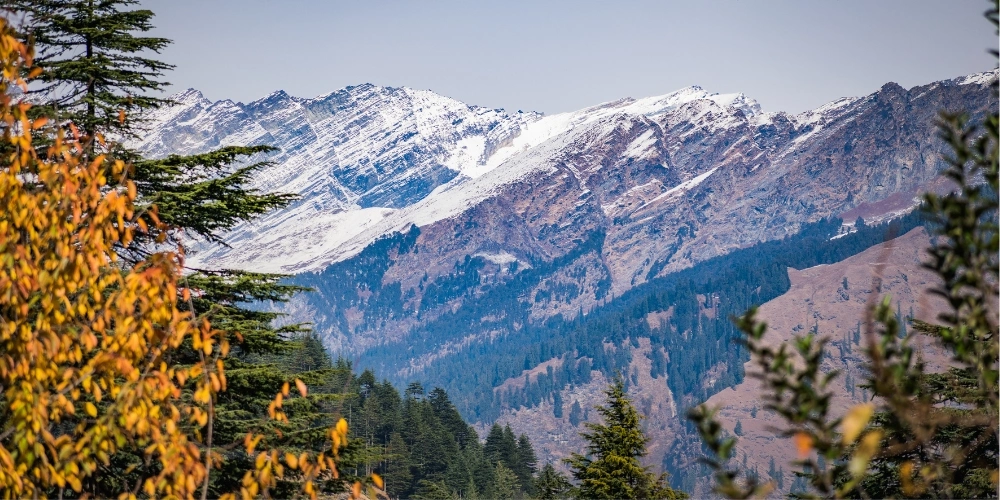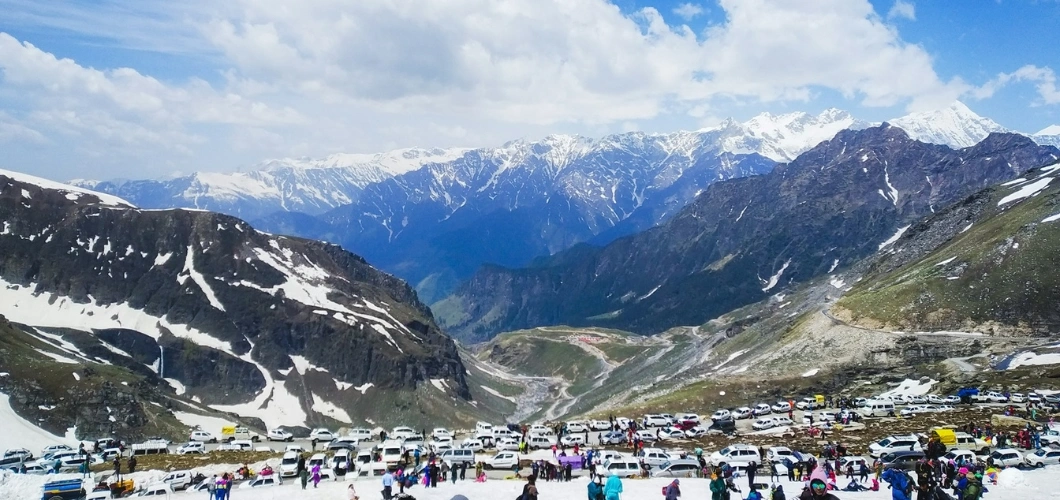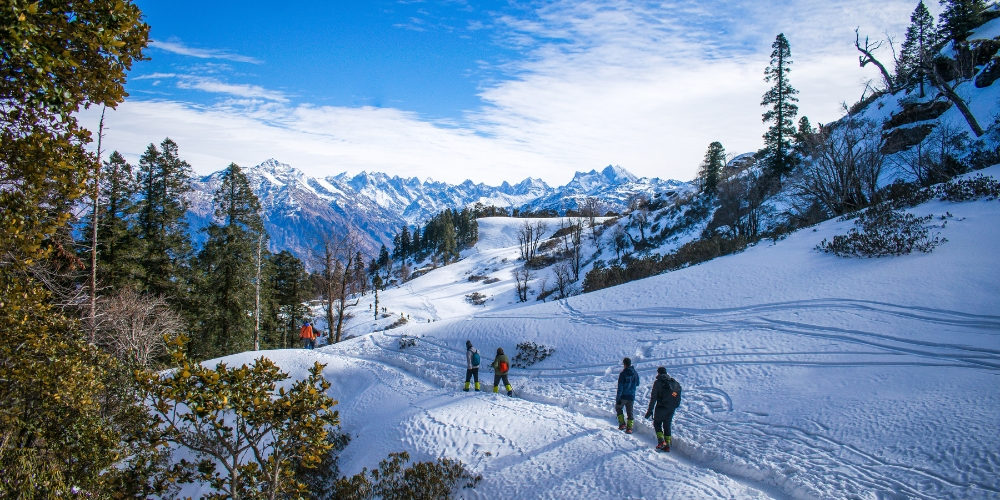
The Valley of Flowers trek offers a chance to connect with nature like never before. It’s one of the iconic Himalayan journeys in Uttarakhand that makes your mind experience what true stillness feels like. During trekking days, you hike through lush, green meadows that are absolutely full of colour. A collection of 500+ species of Himalayan flowers throughout the trek fills your heart with peace.
Sounds fantastic, right? But then the practical question hits: “How hard is it, really?” It’s the number one thing people ask. Don’t worry, we’ve got you covered. This guide will break down the difficulty of the Valley of Flowers trek. You will also learn the tough spots and the real scoop on everything you need to plan your trek itinerary and visit the Valley of Flowers.
Reality Check: Assessing the Difficulty of the Valley of Flowers Trek
Can a beginner handle the Valley of Flowers trek? They can absolutely handle it! It’s not about having a solid trekking experience. It’s about having the stamina to cover long distances. Thin air, sudden storms, conditions like these can scare you. But honestly, that’s what makes this Himalayan trek an adventure! The Valley of Flowers trek difficulty is easy to moderate. Put in a bit of training ahead of time. This will prepare you to soak in those incredible views full of a variety of flowers and mountains.
Key Points to Consider:
- It’s easy to moderate. It’s the kind of trek where your fitness matters more than your experience.
- With every step, the air pressure drops. Proper acclimatization and pacing are key to an enjoyable trek.
- Trails can be slippery or rocky.
- Expect uphill stretches and long walking hours.
Walk along the trail that leads into the Valley of Flowers National Park. This moderate journey is your path to discovering why this place earned its status as a UNESCO World Heritage Site — a breathtaking world where rare blooms create a picture of colour and tranquil beauty.
The Challenging Parts of the Trek
The Valley itself lies at approximately 12,000 feet (3,658 meters) above sea level. But when you trek to Hemkund Sahib, the altitude increases. We will now explore the sections of this popular monsoon trek that come with a few challenges.
Govindghat to Ghangaria (Altitude: 1,828 m to 3,050 m)
The trek starting point is at Govindghat—the base for both the valley and Hemkund Sahib. The trek from Govindghat to Ghangaria is 4 km long. And yes, it’s steep. But it’s also incredibly beautiful. Most people need 6–7 hours to cover this. You’ll likely be tired. But that’s the point! This stretch builds the stamina you’ll need for the incredible days ahead. Every step is quietly helping your body adjust to the higher altitude.
This is an essential part of the Valley of Flowers route. Many trekkers start from Rishikesh or Joshimath before reaching Govindghat to begin the journey.
Ghangaria to the Valley of Flowers (Altitude: 3,050 m to 3,500–3,650 m)
The route from Ghangaria will be short but slippery. You will now trek to reach the Valley of Flowers. The journey is 4 km long. You need to wear good shoes. Otherwise, your attention will remain on simply walking on the slippery trails. There will be spots that will make you stop and soak in the view.
This trek from Ghangaria to the Valley of Flowers offers mind-blowing views. The moment you enter the valley, you see prominent flowers like blue poppies and orchids covering every inch of land. Truly, the monsoon season is the best time to visit the valley.
Ghangaria to Hemkund Sahib (Altitude: 3,050 m to 4,329 m)
This is the big one: the trek to Hemkund Sahib. It’s the mountain’s ultimate challenge. You’ll be climbing a steep, rocky path. Here, every step reminds you just how thin the air is up here. And a little heads-up: those 6 kilometres can be deceiving. This is a serious, all-day effort that’ll take a solid 5-6 hours. But the moment you finally lay eyes on that glacial lake? It hits you—this is a view you’ve earned with every single step. And you will absolutely earn it.
This part is the soul of the Valley of Flowers and Hemkund Sahib trek. Here, adventure meets spirituality in the heart of Uttarakhand.
Who Can Do the Trek?
The Valley of Flowers trek distance is around 38 Km. Honestly, active youngsters can handle this famous trek in Uttarakhand. The main thing is being prepared for long days of hiking in thinner air. But listen to your body! If you have any breathing problems or other health issues, get consent from a medical professional first. It’s all about being safe so you can fully enjoy the journey. This moderate trail is a great match for:
- Beginners who meet the fitness requirements.
- Kids above the age of 10 (fulfilling fitness requirements) under professional guidance.
- Older trekkers can also do the trek.
Remember the importance of having experts by your side when you visit the Valley of Flowers. Considering their help might seem normal. But they help you avoid risks on the trek that can ruin your experience. Beyond this, their instructions really make things easy for you. In addition to the guidance, you get the additional benefits that make trekking possible and easy for you.
Best Time to Visit
The best time to visit the valley is from mid-July to early September. During this time, the Valley of Flowers in Uttarakhand comes alive with alpine flowers and greenery.
If you want to explore the valley, this is when this moderate trek is ideal, and the weather conditions are most favourable. The entire trek takes around 3–5 days and is an easy-to-moderate level trek, perfect for beginners.
Avoid early June or late September — snowmelt or post-monsoon conditions can make the trail harder.
Cautions to Follow
To make your trek to the Valley of Flowers safe and enjoyable, follow these cautions:
- Make sure that you wear the right trekking shoes.
- Have water, some snacks, and a small first-aid kit with you.
- Respect nature. Do not pick or disturb the flowers like the white leaf hog or blue poppy.
- Only follow the trek leader and the paths that are marked.
- Save some power for the next step so that you will not suffer from altitude sickness.
- Heads up: heavy rain or a disaster warning may change or cancel the trek itinerary due to natural calamities.
Follow these cautions. They help you enjoy the Valley of Flowers trek without stress or risk.
Conclusion
The trek to the Valley of Flowers is moderately difficult. One with an average fitness level can surely manage the trek distance if they are well prepared, take it at a proper pace, and have a trek leader’s guidance. Flowers are in full bloom if you decide to come to the valley during the best time to visit it, i.e., from mid-July to early September. Moreover, the Valley of Flowers trek cost, or trek fee, varies depending on the package, but every penny is worth it.

